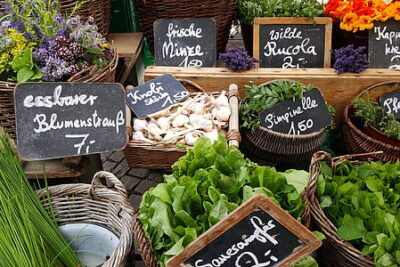
Can Sedum and Succulents Coexist in One Pot? Expert Tips
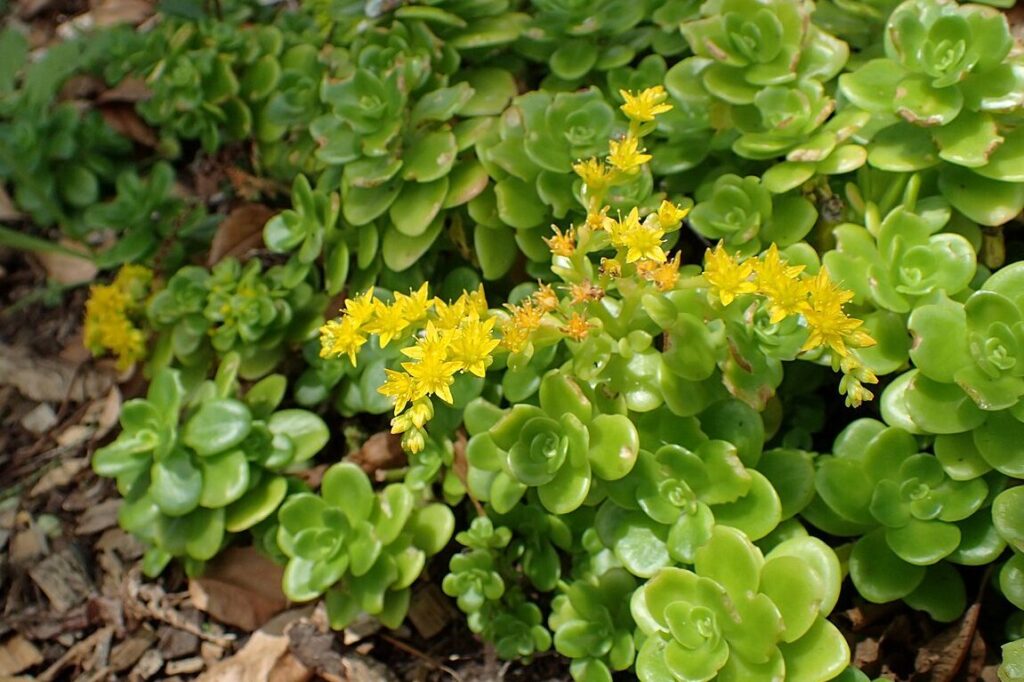
Sedum and succulents are two popular types of plants known for their resilience and beauty. Sedum, also known as stonecrop, is a genus of flowering plants that includes a variety of species with different shapes, colors, and textures. Succulents, on the other hand, are a group of plants that have thick, fleshy leaves and stems that store water. Both sedum and succulents are known for their ability to thrive in dry conditions, making them popular choices for drought-tolerant gardens and containers.
We will explore the question of whether sedum and succulents can coexist in one pot. We will discuss the similarities and differences between these two types of plants, their individual care requirements, and the factors to consider when combining them in a container. Additionally, we will provide expert tips on how to successfully create a harmonious and visually appealing arrangement of sedum and succulents in a single pot. Whether you are a gardening enthusiast or a beginner, this article will provide valuable insights and guidance on creating a stunning combination of sedum and succulents.
- Yes, Sedum and succulents can coexist in one pot
- Use a well-draining potting mix for both plants
- Ensure the pot has adequate drainage holes
- Choose succulents and Sedum varieties with similar care requirements
- Place the pot in a location with bright but indirect sunlight
- Water the plants sparingly, allowing the soil to dry out between waterings
- Avoid overwatering, as this can lead to root rot
- Fertilize the plants sparingly, following package instructions
- Prune and remove any dead or damaged foliage regularly
- Monitor for pests and treat accordingly
- Enjoy the beautiful combination of Sedum and succulents in one pot
- Frequently Asked Questions
Yes, Sedum and succulents can coexist in one pot
If you've ever wondered whether you can mix Sedum and succulents in one pot, the answer is a resounding yes! These two types of plants can not only coexist but also create a stunning and unique arrangement. Whether you're a seasoned gardener or a beginner, combining Sedum and succulents in a single container can add depth, texture, and visual interest to any space.
Expert Tips for Combining Sedum and Succulents
While it may seem simple to throw together any Sedum and succulent you have on hand, there are a few tips from experts to ensure a successful pairing:
- Consider the Lighting Requirements: Sedum and succulents thrive in bright light conditions. It's essential to choose plants that have similar light requirements to ensure they both flourish.
- Choose Complementary Colors and Textures: Mixing Sedum and succulents with different colors and textures can create an eye-catching display. Consider combining plants with contrasting foliage, such as Sedum's plump leaves with the rosette shape of a succulent like Echeveria.
- Pay Attention to Watering Needs: Sedum and succulents both have low water requirements, but it's crucial to understand their specific needs. Ensure the pot has proper drainage and water the plants sparingly, allowing the soil to dry out between waterings.
- Mind the Growth Habits: Some Sedum varieties can have sprawling or trailing growth habits, while succulents tend to have a more compact form. Consider the growth habits of each plant and arrange them accordingly to create a balanced composition.
- Use Well-Draining Soil: Sedum and succulents prefer well-draining soil to prevent root rot. Opt for a gritty potting mix specifically formulated for succulents or create your own by mixing regular potting soil with sand or perlite.
By following these expert tips, you can create a beautiful and harmonious arrangement of Sedum and succulents in one pot. Let your creativity flow and experiment with different combinations to find the perfect pairing for your space. Whether you place it on a sunny windowsill, a patio, or as a centerpiece on your dining table, the Sedum and succulent combination will surely captivate the attention of anyone who sees it.
Use a well-draining potting mix for both plants
When it comes to combining sedum and succulents in one pot, the key is to provide them with a well-draining potting mix. Both sedum and succulents prefer soil that allows excess water to pass through easily, preventing root rot and other moisture-related issues.
 Where to Buy Elephant Toe Succulent: Find Your Perfect One
Where to Buy Elephant Toe Succulent: Find Your Perfect OneUsing a mixture of perlite, sand, and potting soil can create the perfect balance of drainage and moisture retention. The perlite and sand help to increase the porosity of the soil, allowing water to flow freely, while the potting soil provides essential nutrients for the plants.
Remember to avoid using regular garden soil, as it tends to be too dense and can lead to waterlogged roots. In addition, using a pot with drainage holes at the bottom will further aid in preventing water from pooling and causing problems for your sedum and succulents.
Provide adequate sunlight
Both sedum and succulents thrive in bright sunlight. When combining them in one pot, it is crucial to place the container in a location that receives at least six hours of direct sunlight per day.
Choose a spot near a south-facing window or a patio that gets ample sunlight throughout the day. If you notice that your sedum and succulents are stretching or becoming leggy, it may be an indication that they are not receiving enough light. In such cases, consider supplementing natural light with artificial grow lights to ensure their proper growth.
Water sparingly
Sedum and succulents are known for their ability to store water in their leaves and stems, making them highly drought-tolerant. Overwatering can be detrimental to their health and can lead to root rot.
Water your sedum and succulents sparingly, allowing the soil to dry out completely between waterings. Stick your finger about an inch into the soil, and if it feels dry, it's time to water. Remember that it's better to underwater than to overwater these plants.
During the hot summer months, when the plants are actively growing, you may need to increase the frequency of watering. However, always ensure that the excess water drains out of the pot to avoid waterlogged roots.
 Feng Shui Your Home with Stylish Succulents: Natural Solution
Feng Shui Your Home with Stylish Succulents: Natural SolutionConsider the growth habits of both plants
When selecting sedum and succulents to coexist in one pot, it is important to consider their growth habits. Some sedum varieties can spread and sprawl, while certain succulents tend to grow taller and upright.
Choose sedum and succulents that have similar growth habits to ensure they don't compete for space and resources within the pot. This will help maintain a harmonious and visually appealing arrangement.
Additionally, regular pruning and trimming can help control the growth of both plants and prevent one from overpowering the other. Keeping them in check will also promote a well-balanced and aesthetically pleasing pot.
- Tip: If you notice any dead or diseased foliage, promptly remove it to prevent the spread of diseases and maintain the health of your sedum and succulents.
By following these expert tips, you can successfully combine sedum and succulents in one pot, creating a stunning and low-maintenance display of contrasting textures and colors.
Ensure the pot has adequate drainage holes
When it comes to creating a stunning and low-maintenance display, combining sedum and succulents in one pot can be a winning combination. However, to ensure their coexistence thrives, a few expert tips should be followed. One crucial aspect to consider is ensuring that the pot has adequate drainage holes.
Sedum and succulents are both drought-tolerant plants that prefer well-draining soil. Without proper drainage, excess water can accumulate in the pot, leading to root rot and other issues. To prevent this, make sure the pot has multiple drainage holes at the bottom. This allows excess water to escape, preventing waterlogged soil and ensuring the health of your plants.
Choose a suitable potting mix
Another key factor in successfully growing sedum and succulents together is selecting the right potting mix. These plants thrive in well-draining soil that promotes airflow to their roots. Avoid using regular garden soil, as it tends to compact and retain moisture, which can be detrimental to the plants.
 Optimal Number of Succulents per Pot: Finding the Right Balance
Optimal Number of Succulents per Pot: Finding the Right BalanceInstead, opt for a specialized succulent or cactus potting mix. These mixes are formulated to provide the ideal balance of moisture retention and drainage. They often contain ingredients like perlite or pumice, which help improve aeration and prevent soil compaction.
Provide ample sunlight
Sedum and succulents are sun-loving plants that require ample sunlight to thrive. When planting them together, it is essential to place the pot in a location that receives at least six hours of direct sunlight per day. This can be a sunny window sill, balcony, or patio.
Keep in mind that different varieties of sedum and succulents may have varying light requirements. Some species can tolerate partial shade, while others prefer full sun. Before combining them in one pot, research their specific light needs to ensure they receive the appropriate amount of sunlight for optimal growth.
Water sparingly and avoid overwatering
One of the most common mistakes when caring for sedum and succulents is overwatering. These plants have adapted to survive in arid conditions and can store water in their leaves and stems. Therefore, they do not require frequent watering like other houseplants.
When watering your sedum and succulent pot, it is essential to follow a "soak and dry" approach. This means thoroughly watering the plants until water drains out of the bottom holes, then allowing the soil to dry out completely before watering again. Overwatering can lead to root rot and other issues, so it's better to err on the side of underwatering.
Conclusion:
Combining sedum and succulents in one pot can create a visually striking display that requires minimal care. By ensuring adequate drainage, selecting the right potting mix, providing ample sunlight, and practicing proper watering techniques, you can create a harmonious coexistence for these beautiful plants.
 Indulge in the Divine Delight: Succulent and Heavenly Pies from Heaven
Indulge in the Divine Delight: Succulent and Heavenly Pies from HeavenChoose succulents and Sedum varieties with similar care requirements
Succulents and Sedum are both popular choices for indoor and outdoor gardens due to their low maintenance and ability to thrive in various conditions. While they may have slightly different care requirements, it is possible to coexist these two plants in one pot by selecting varieties that have similar needs.
Consider light and temperature requirements
Succulents and Sedum both love bright sunlight, so it's important to find a spot where they can receive at least six hours of direct sunlight each day. However, some varieties of Sedum can tolerate partial shade, while most succulents prefer full sun. It's a good idea to choose succulents that can handle slightly less sunlight to ensure they thrive alongside Sedum.
When it comes to temperature, most succulents and Sedum are quite hardy and can tolerate a wide range of temperatures. However, it's essential to avoid extreme heat or cold, as it can damage both plants. Aim for a temperature range of 60-80°F (15-26°C) for optimal growth.
Soil and watering requirements
Succulents and Sedum have similar soil requirements. They both prefer well-draining soil that allows excess water to escape easily. You can create a suitable mix by combining regular potting soil with perlite or coarse sand to improve drainage. Avoid using heavy or compacted soil, as it can lead to root rot.
When it comes to watering, both succulents and Sedum are drought-tolerant plants that prefer infrequent but thorough watering. Allow the soil to dry out completely between waterings to prevent overwatering, which can cause root rot. It's always better to underwater than overwater these plants.
Container selection and repotting
Choosing the right container is crucial when combining succulents and Sedum in one pot. Make sure the pot has drainage holes to prevent water from pooling at the bottom. It's also a good idea to select a shallow container, as both plants have relatively shallow root systems.
Repotting may be necessary as the plants grow. It's essential to repot them separately if they outgrow the container, as their root systems can become tangled and cause damage when trying to separate them. When repotting, use fresh well-draining soil and ensure the new container is large enough to accommodate the plants' growth.
 Combining Succulents: Can You Plant Them Alongside Other Plants?
Combining Succulents: Can You Plant Them Alongside Other Plants?Final thoughts
While succulents and Sedum may have slightly different care requirements, with careful selection and proper attention, they can coexist harmoniously in one pot. Remember to choose varieties with similar light and temperature needs, provide well-draining soil, water sparingly, and select an appropriate container. With these expert tips, you can create a stunning arrangement that showcases the beauty of both plants.
Place the pot in a location with bright but indirect sunlight
When it comes to combining sedum and succulents in one pot, the first step is to choose the right location. These plants thrive in bright but indirect sunlight, so find a spot that provides ample light without exposing them to harsh, direct rays.
Choose a well-draining potting mix
A crucial aspect of successful coexistence between sedum and succulents is the choice of potting mix. Opt for a well-draining mix specifically formulated for these types of plants. It should be a blend of coarse sand, perlite, and a lightweight potting soil.
Consider the size and growth habits of the plants
When selecting sedum and succulents to coexist in one pot, it's essential to consider their size and growth habits. Choose plants that have similar growth rates and requirements to ensure they can thrive together without one overtaking the other. It's also important to leave enough space between each plant to allow for adequate airflow and prevent overcrowding.
Water sparingly, but thoroughly
Both sedum and succulents are drought-tolerant plants that store water in their leaves. To prevent root rot and other moisture-related issues, it's crucial to water them sparingly but thoroughly. Allow the soil to dry out completely between watering sessions, and make sure the excess water drains out of the pot to avoid waterlogged roots.
Provide occasional fertilization
Sedum and succulents generally don't require frequent fertilization, but providing them with occasional nutrients can promote healthy growth. Use a balanced, slow-release fertilizer specifically formulated for succulents and follow the instructions on the packaging to avoid overfeeding.
Monitor for pests and diseases
While sedum and succulents are generally hardy plants, they can still fall victim to pests and diseases. Regularly inspect your pot for any signs of infestation or disease, such as discolored leaves, webbing, or unusual growth. If you notice any issues, promptly address them using appropriate organic or chemical treatments.
 Unveiling the Wealthy Potential of Money Tree Succulents
Unveiling the Wealthy Potential of Money Tree SucculentsEnjoy the beauty of the coexistence
By following these expert tips, you can create a stunning arrangement of sedum and succulents in one pot. Their contrasting textures and colors will provide a visually appealing display while requiring minimal maintenance. Sit back and enjoy the beauty of their coexistence in your home or garden!
Water the plants sparingly, allowing the soil to dry out between waterings
Watering Tips
When it comes to maintaining a pot with both sedum and succulents, proper watering is crucial. These plants have similar water requirements, making it easier to find a balance.
It is important to water the plants sparingly, allowing the soil to dry out between waterings. Overwatering can lead to root rot and other issues, so it's best to err on the side of caution.
One helpful tip is to use the "soak and dry" method. This involves thoroughly watering the pot until water runs through the drainage holes, and then waiting for the soil to completely dry out before watering again. This mimics the natural rainfall patterns these plants are accustomed to.
Remember, it is better to underwater than to overwater. Succulents and sedum are drought-tolerant plants, so they can withstand periods of dryness.
Light and Temperature Requirements
Succulents and sedum thrive in bright, indirect light. Place the pot in a location where it receives at least 6 hours of sunlight per day. However, be cautious of exposing the plants to intense, direct sunlight as it may cause sunburn and damage their leaves.
 Best Succulent Ground Covers: Choosing the Perfect Garden Plants
Best Succulent Ground Covers: Choosing the Perfect Garden PlantsAdditionally, these plants prefer warm temperatures ranging from 60°F to 80°F (15°C to 27°C). Avoid exposing them to extreme cold temperatures as it can lead to frost damage and poor growth.
Choosing the Right Pot and Soil
When selecting a pot for your sedum and succulents, opt for one with drainage holes to prevent water from pooling at the bottom. This helps to avoid root rot and promotes healthy growth.
As for the soil, a well-draining mix is essential. You can create your own by combining equal parts of potting soil, perlite, and coarse sand. This mixture allows excess water to flow freely and prevents the roots from sitting in soggy soil.
Alternatively, you can find pre-mixed cactus and succulent soil at your local garden center, specifically formulated for their needs.
Pruning and Propagation
Regular pruning helps maintain the shape and health of both sedum and succulents. Use clean, sharp scissors or pruning shears to remove any dead or wilted leaves, stems, or flowers.
Propagation is also a great way to expand your collection. Both sedum and succulents can be easily propagated through leaf or stem cuttings. Simply remove a healthy leaf or stem, let it dry for a few days until a callus forms, and then plant it in well-draining soil.
Remember to provide the propagated cuttings with the same care and conditions as the parent plants, and soon you'll have a new batch of thriving sedum and succulents.
 Hanging Succulents on Walls: Non-Damaging Techniques Guide
Hanging Succulents on Walls: Non-Damaging Techniques GuideFinal Thoughts
Yes, sedum and succulents can coexist beautifully in one pot. By following these expert tips on watering, light and temperature requirements, pot and soil selection, as well as pruning and propagation, you can create a stunning arrangement that combines the unique textures and colors of both plants.
With a little care and attention, your sedum and succulent pot will be a focal point in your home or garden, bringing joy and beauty for years to come.
Avoid overwatering, as this can lead to root rot
Can Sedum and Succulents Coexist in One Pot? Expert Tips
If you are a fan of both sedum and succulents, you may be wondering if it is possible to have them coexist in one pot. The good news is that, with the right care and attention, these two types of plants can indeed thrive together.
One of the most important things to keep in mind when combining sedum and succulents in one pot is to avoid overwatering. Both sedum and succulents are drought-tolerant plants that store water in their leaves and stems. Overwatering can lead to root rot, which can be detrimental to both types of plants.
To prevent overwatering, it is recommended to use a well-draining potting mix specifically formulated for succulents. This will ensure that excess water can easily drain away, preventing the roots from sitting in water for too long.
In addition to using a well-draining potting mix, it is important to monitor the moisture level in the soil. Before watering, always check if the top inch of the soil is dry. If it is still moist, it is best to wait a few more days before watering again.
 Surprise Mom with Stunning Succulents: The Perfect Mother's Day Gift
Surprise Mom with Stunning Succulents: The Perfect Mother's Day GiftWhen it comes to watering sedum and succulents, it is generally better to underwater than to overwater. These plants are adapted to survive in arid conditions, so they can tolerate slight drought. However, if the leaves start to shrivel or become wrinkled, it may be a sign that they need more water.
Another important aspect to consider when combining sedum and succulents in one pot is their sunlight requirements. Both types of plants thrive in bright, indirect light. Place the pot in a location where it will receive at least 6 hours of sunlight per day.
Lastly, it is important to keep in mind that sedum and succulents have different growth habits. Sedum plants are typically more upright and bushy, while succulents often have a rosette-like growth pattern. When selecting plants for your pot, choose varieties that have similar growth habits to ensure a harmonious arrangement.
Sedum and succulents can coexist in one pot as long as you provide the right care. Avoid overwatering, use a well-draining potting mix, monitor moisture levels, provide adequate sunlight, and select plants with similar growth habits. By following these expert tips, you can create a stunning and thriving combination of sedum and succulents in your pot.
Fertilize the plants sparingly, following package instructions
Fertilizing your sedum and succulents is important to keep them healthy and thriving. However, it's crucial to do it sparingly and follow the instructions on the fertilizer package. These plants are adapted to grow in nutrient-poor environments, so excessive fertilization can actually harm them.
When choosing a fertilizer, opt for a low-nitrogen, water-soluble variety. High nitrogen levels can cause excessive leaf growth, resulting in weak stems that may not support the weight of the plants. Additionally, a water-soluble fertilizer ensures that the nutrients are easily absorbed by the plants.
 Sending Succulents: The Perfect Gift for Plant Lovers
Sending Succulents: The Perfect Gift for Plant LoversIt's recommended to fertilize your sedum and succulents during the growing season, which is typically spring and summer. During this time, they are actively growing and can benefit from the additional nutrients. However, reduce or stop fertilizing in the fall and winter when the plants enter a period of dormancy.
Tip: Before applying any fertilizer, it's essential to moisten the soil beforehand. This helps prevent root damage and aids in the proper absorption of nutrients by the plants.
Choose a well-draining potting mix
Proper drainage is vital for sedum and succulents as they are prone to root rot if their roots are constantly sitting in water. To ensure good drainage, select a well-draining potting mix specifically formulated for succulent plants.
These potting mixes are usually composed of a combination of materials such as perlite, pumice, or coarse sand. These components help create air pockets in the soil, allowing excess water to drain away quickly.
When repotting your sedum and succulents, make sure to choose a pot with drainage holes at the bottom. This allows excess water to escape and prevents waterlogging. Avoid using pots without drainage holes or adding a layer of rocks at the bottom, as this can actually hinder drainage and promote water retention.
Avoid overwatering
Overwatering is one of the most common mistakes when caring for sedum and succulents. These plants are adapted to arid conditions and can store water in their leaves and stems. Therefore, they are more tolerant of underwatering rather than overwatering.
Water your sedum and succulents only when the top inch of the soil feels dry. Stick your finger into the soil to check the moisture level, ensuring that it's not consistently wet or damp. Remember, it's better to underwater than to overwater these plants.
When watering, use the "soak and dry" method. Thoroughly water the plants until the water drains out of the bottom of the pot. Allow the soil to dry completely before watering again. This mimics the natural rainfall pattern in their native habitats and prevents the roots from sitting in stagnant water.
- Water sparingly during the growing season
- Reduce watering in the fall and winter
- Avoid watering the foliage to prevent rot
- Keep an eye out for signs of overwatering, such as yellowing leaves or mushy stems
Tip: If you're unsure about the moisture level, it's better to wait a few more days before watering than to risk overwatering.
Prune and remove any dead or damaged foliage regularly
Pruning and removing any dead or damaged foliage regularly is essential for maintaining the health and appearance of your sedum and succulent pot. Both sedum and succulents are known for their ability to store water in their leaves, making them drought-tolerant and low-maintenance plants. However, this does not mean they are invincible.
Over time, sedum and succulents may develop dead or damaged foliage due to various reasons such as pests, diseases, inadequate watering, or natural aging. It is crucial to prune and remove these unhealthy parts promptly to prevent further spread of diseases and to promote new growth.
When pruning your sedum and succulents, it is recommended to use clean, sharp scissors or pruning shears. Start by identifying any dead or damaged leaves, stems, or branches. Carefully cut these parts close to the main stem or at their base, making sure not to damage the healthy parts of the plant.
Regular pruning not only improves the overall appearance of your pot but also allows more sunlight and airflow to reach the remaining foliage, reducing the risk of fungal diseases and rot. Additionally, removing dead or damaged foliage helps redirect the plant's energy towards new growth and encourages the development of a more compact and bushy habit.
In some cases, you may also notice leggy or elongated growth in your sedum and succulents. This can occur when the plants are not receiving enough light or are stretching towards a light source. To rectify this, you can trim back the elongated stems to encourage branching and promote a more compact growth habit.
Remember, pruning should be done with caution and moderation. Avoid excessive pruning as it can weaken the plant and make it more susceptible to stress and diseases. Always observe the response of your sedum and succulents after pruning and adjust your maintenance routine accordingly.
Monitor for pests and treat accordingly
When combining Sedum and succulents in one pot, it is important to monitor the plants for pests regularly. Pests such as aphids, mealybugs, and spider mites can quickly infest these plants and cause damage if left untreated.
TIP: Inspect the leaves and stems of your Sedum and succulents frequently for any signs of infestation. Look for small insects, webbing, or sticky residue on the leaves. If you notice any pests, take immediate action to prevent further damage.
There are several ways to treat pests on Sedum and succulents:
- Isolate affected plants: If you spot pests on one plant, it's crucial to isolate it from the others to prevent the infestation from spreading.
- Remove pests manually: Use a pair of tweezers or a cotton swab dipped in rubbing alcohol to carefully remove individual pests from the plants.
- Natural remedies: Consider using natural pest control methods such as neem oil, insecticidal soap, or a mixture of water and mild dish soap. Be sure to follow the instructions on the product label for safe and effective use.
- Biological control: Introduce beneficial insects like ladybugs or lacewings, which feed on common pests, to help control the infestation naturally.
By staying vigilant and taking proactive measures to treat pests, you can ensure that your Sedum and succulents coexist harmoniously in one pot.
Enjoy the beautiful combination of Sedum and succulents in one pot
Are you a fan of succulents and looking to add some variety to your collection? Well, look no further! Combining sedum and succulents in one pot can create a stunning display of colors, textures, and shapes. Whether you're a seasoned gardener or a beginner, this unique combination is sure to catch everyone's attention.
But can sedum and succulents coexist in one pot?
The answer is a resounding yes! Sedum and succulents are compatible plants that can thrive together in a shared container. Both plants have similar characteristics that make them ideal companions. They both have minimal water requirements, prefer well-draining soil, and enjoy plenty of sunlight. These shared preferences make it easier to care for both plants simultaneously.
Expert Tips for Creating a Stunning Combination:
- Choose complementary colors: When selecting sedum and succulents for your pot, consider choosing plants with complementary colors. This will create a visually appealing arrangement that will stand out in any space. For example, pairing a sedum with bluish-gray foliage with succulents that have vibrant red or orange hues can create a striking contrast.
- Varied textures: Another key element in creating a visually interesting combination is to incorporate plants with different textures. Sedum and succulents come in various shapes and sizes, from spiky to rosette-shaped leaves. Experiment with different textures to add depth and dimension to your arrangement.
- Consider growth habits: It's essential to consider the growth habits of sedum and succulents when arranging them in one pot. Ensure that you choose plants with similar growth rates to prevent one from overpowering the others. This will help maintain a balanced and harmonious display.
- Proper potting mix: Both sedum and succulents thrive in well-draining soil. Make sure to use a potting mix specifically formulated for succulents and cacti. This will prevent waterlogging and ensure the plants' roots have the necessary air circulation.
- Light and water requirements: Place your sedum and succulent pot in a sunny spot where they can receive at least six hours of direct sunlight per day. Remember to water them sparingly as overwatering can lead to root rot. Allow the soil to dry out between waterings to prevent any moisture-related issues.
By following these expert tips, you can create a stunning combination of sedum and succulents that will become the centerpiece of any indoor or outdoor space. So, get creative and start experimenting with different varieties to find the perfect combination that suits your style and preferences.
With a little care and attention, your sedum and succulent pot will thrive, bringing beauty and tranquility to your surroundings. Happy planting!
Frequently Asked Questions
1. Can sedum and succulents coexist in one pot?
Yes, sedum and succulents can coexist in one pot as they have similar care requirements and can thrive together.
2. What are the benefits of planting sedum and succulents together?
Planting sedum and succulents together can create a visually appealing arrangement and make watering and maintenance more convenient.
3. How should I care for sedum and succulents in the same pot?
Ensure that the pot has good drainage, use a well-draining soil mix, and provide them with adequate sunlight and occasional watering.
4. Can I mix different varieties of sedum and succulents in one pot?
Absolutely! Mixing different varieties of sedum and succulents can add diversity and interest to your arrangement.
If you want to read more articles similar to Can Sedum and Succulents Coexist in One Pot? Expert Tips, you can visit the Planters and Arrangements category.

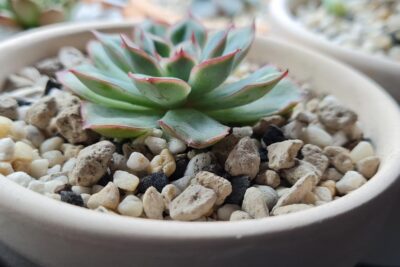
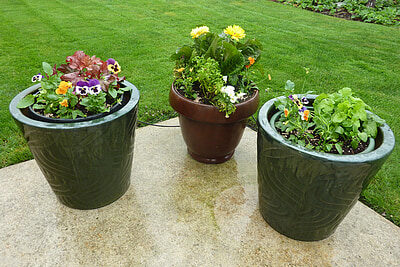


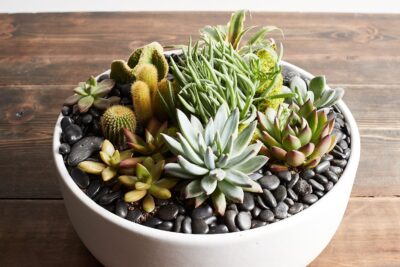
You Must Read